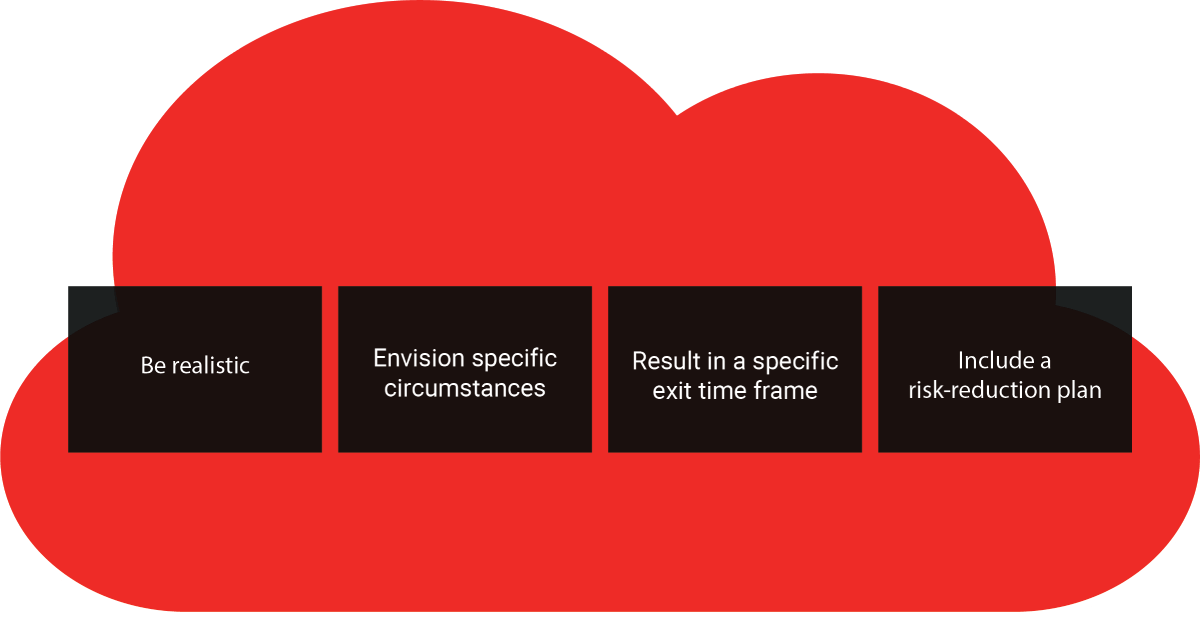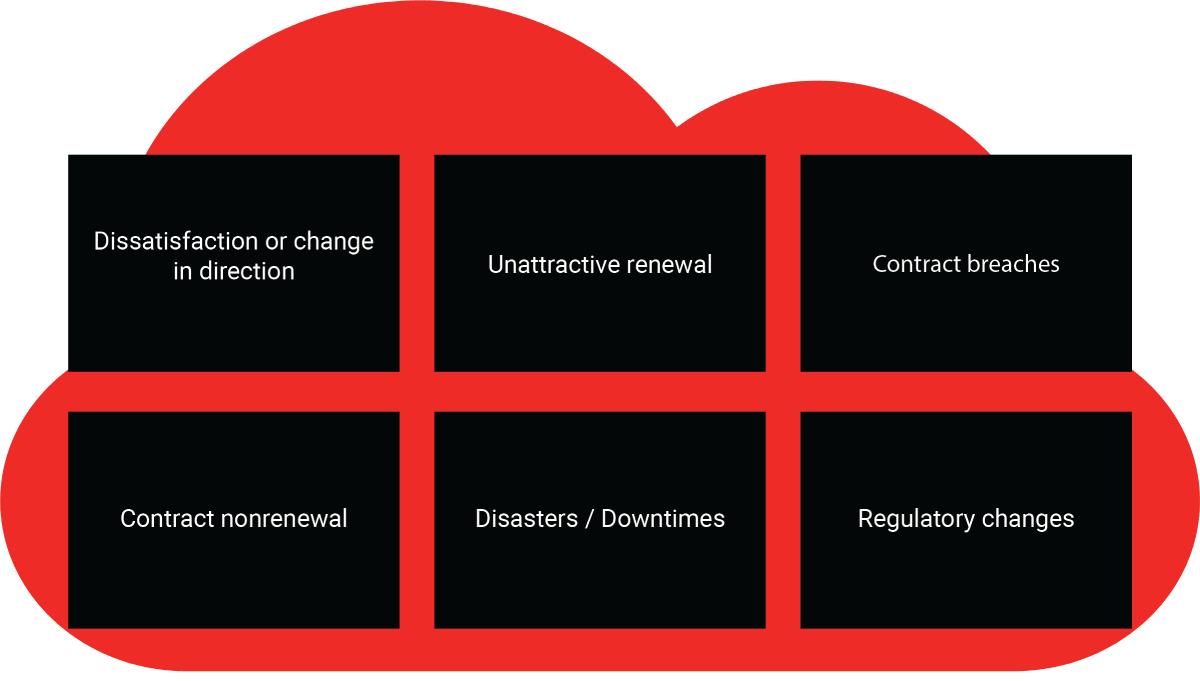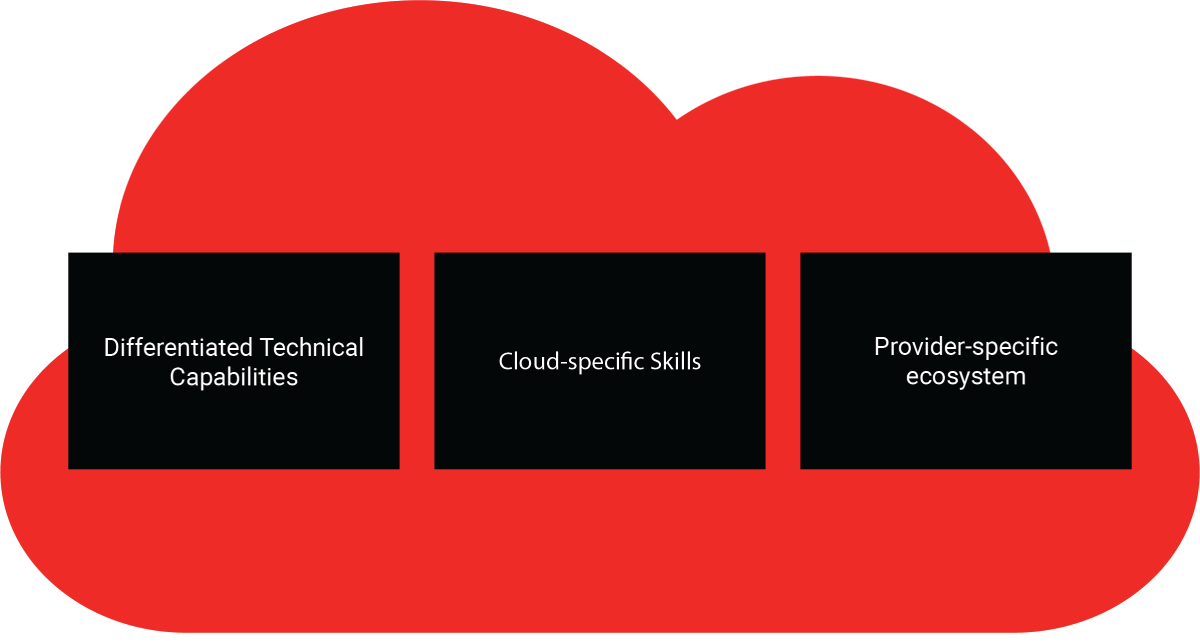Cloud repatriation (moving workloads back from a public cloud) is rare. But it’s vital to have an exit strategy that describes dependencies and choices, even though you may never use it. Awareness of possibilities and planning for them is an important part of strategic planning.
Many organizations successfully adopt public cloud infrastructure, a platform, and software as a service (IaaS, PaaS, and SaaS) without developing a cloud exit strategy. Importance of a Cloud Exit plan must be understood in the realm of Organization strategy and needs to be a living document.
However, executive leaders increasingly face both internal risk-management pressures as well as regulatory demands that may require their organization to address cloud provider concentration risks. Unfortunately, facilitating the exit from a cloud provider — implementing cloud portability — has numerous drawbacks.
Several regulators, mainly in the EU and focused on financial services, now mandate an exit strategy. Those organizations that do look at exit strategies often focus on contracts — aspects such as terms and conditions, and service-level agreements. Although how to get out of a contract is important, it’s just the beginning when it comes to an exit strategy.
In an exit strategy you must also examine issues such as:
- Data ownership
- Backup
- Getting back your data
- Portability
Cloud Value vs Risks
|
Value |
Risks |
|
|
How to Make a Plan for a Cloud Exit Strategy
1. Define the Scenarios
a) Features of a Cloud Exit Strategy Scenarios

b) Some Common Reasons for Building a Cloud Exit Strategy

c) Cloud Exit Feasibility Challenges for PaaS & IaaS – Application Nonportability

2. Preparations for Executing Cloud Exit Plan
Preparedness Measures
- Regularly update cloud exit plans for applications
- Have an exit strategy document for each cloud-dependent application
- Contract with outsourcers for exit execution contingencies
- Plan realistic time frames, with most exits being gradual, rather than immediate
Portability Measures
- Design long-lived strategic applications for portability
- Invest in talent management to develop skills with alternate providers
3. Define Exit Time Frames

Other Considerations for Cloud Exit Strategy
- How to create a public cloud exit strategy that is focused on ongoing risk governance?
- How to find the appropriate balance between maximizing the business value of cloud services and reducing vendor concentration risks?
- How to create scenario-based exit contingency plans with associated risk mitigations and realistic time frames?
- How to reduce vendor-related risks rather than seeking portability for cloud-dependent applications with high exit complexity and cost?
- How to integrate portability into the design of long-lived strategic applications in cloud IaaS and PaaS?
- Why should organizations consider outsourcing cloud exit preparation and implementation to a certified cloud services provider?
Conclusion
Few cloud exits are likely to be executed on an emergency basis. Rather, most exits will be gradual, over the period of one or two years. However, executive leaders need to make contingency plans nevertheless.

Gartner recommends engaging certified cloud partners early on in your cloud planning process, to ensure that loopholes are identified early and plugged in before it turns out to be a disaster.
A well versed partner with multi-cloud skills can help accelerate and de-risk your Cloud exit journey for your long term cloud success.


